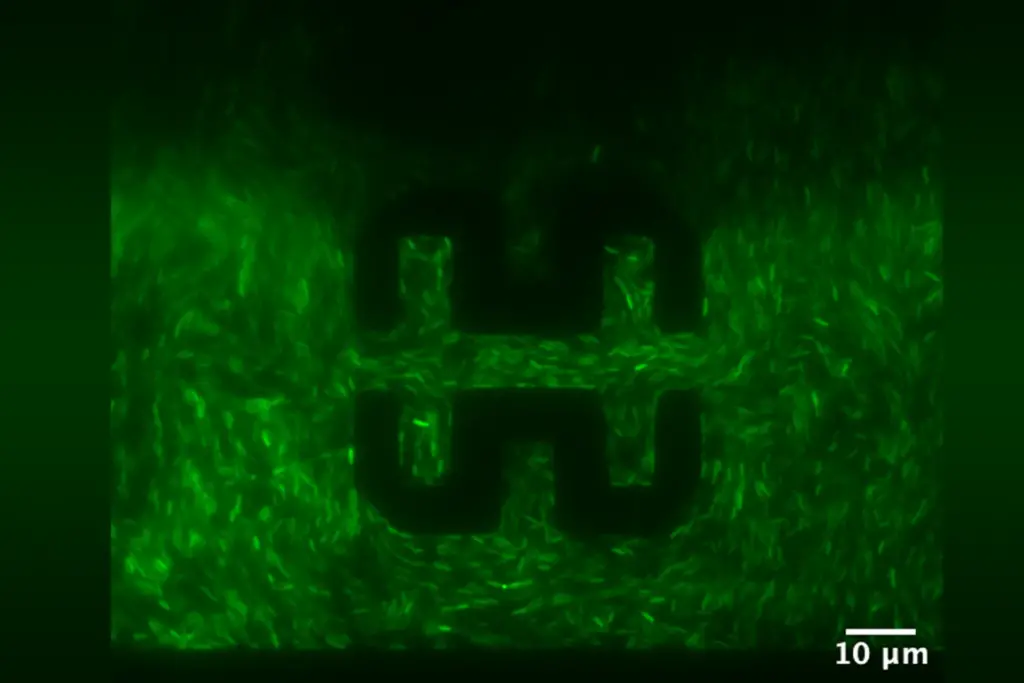The EIPBN conference, which stands for the International Conference on Electron, Ion, and Photon Beam Technology and Nanofabrication, and is also known as “3-Beams”, annually attracts scientists and engineers dedicated to electron, ion, and photon lithography, imaging, and analysis, as well as atomically precise fabrication, nanofabrication process technologies, emerging technologies, and their diverse applications across various fields.
From May 30 to June 2, 2023, several members of the Heidelberg Instruments and Heidelberg Instruments Nano staff were present in San Francisco, actively representing our company. They engaged with attendees at our booth and delivered informative talks on the conference stage.
First prize: Prof. Yuichi Wakamoto and Kei Ikemori

For their image and video of bacteria with a synthetic gene circuit and fluorescent proteins grown in microchambers, Professor Yuichi Wakamoto and PhD student Kei Ikemori from Wakamoto Laboratory at the Graduate School of Arts and Sciences within the University of Tokyo, Japan, were awarded with the 1st prize.
In August, we presented them with their winner’s certificate and asked them about the role their Heidelberg Instruments system plays when advancing biological and medical research:
“The advantage of the µMLA lies in its ability to identify the optimal exposure conditions by assigning accurate exposure parameters. Furthermore, due to the short writing time, altering the design is straightforward so the device can easily be fabricated, tested, and re-fabricated with improvements. This allows us to create the optimal device without compromise, thereby facilitating high-quality experiments.”
Once again, we congratulate them on their achievement and wish them all the best for the future.
Second prize: Sascha de Wall

For his image of an optical grating, which is used on atom chips to extend microtechnological functions for creating an integrated quantum laboratory, Sascha de Wall, from the Institute of Micro Production Technology at the University of Hannover, Germany, was awarded with the 2nd prize.
In July, when we presented him with his winner’s certificate, Sascha expressed his gratitude for the feedback he received from his contest participation:
“Thank you very much for your personal visit to our institute. We are very honoured to receive such a high positive response regarding the photo competition and our research.”
Once again, we congratulate Sascha on his achievement and wish him all the best for the future.
Third prize: Dr. Giorgio Zambito

For their image of a semiconductor MoS2 nano-circuit in the shape of the DIFILab logo, Professor Francesco Buatier de Mongeot, Maria Caterina Giordano, Researcher, Giorgio Zambito, PhD Student, and Matteo Gardella, Post-Doc at the Physics Department of University of Genova, were awarded with the 3rd prize.
In September, we presented them with their winner’s certificate and asked them about the role their Heidelberg Instruments system plays when developing novel semiconductor devices:
“At the University of Genova, we exploit the NanoFrazor lithography to develop nanocircuit devices based on 2D semiconductor materials, and to locally tailor their optoelectronic properties. Additionally novel approaches for the fabrication of plasmonic nanoantennas onto transparent dielectric substrate are developed.”
Once again, we congratulate them on their achievement and wish them all the best for the future.
An overview of the results can be found here: Application Image Competition 2022/2023
Register for the new edition: Application Image Competition 2023/2024





